Film & Movies
John Lasseter honored at 4th Annual VES Awards
Chuck Oberleitner returns to JHM with an article about last Wednesday’s award show at the Hollywood Palladium. Where the visual effects industry honored the new head of Disney Feature Animation with a lifetime achievement award

If you’re the kind of person who likes to sit in a movie theatre watching and reading as all the credits roll by, have I got an awards show for you!
Last Wednesday, the Visual Effects Society (VES) held its fourth annual awards show at the Hollywood Palladium in Hollywood, California. The star-studded, black-tie event played host to a “who’s who” of the biggest names in visual effects from television, motion pictures, commercials, music videos, and video games.
Also honored that evening were the founding chairman of the VES, Jim Morris, and Pixar Animation creative executive John Lasseter, who received the Georges Melies Award for his “pioneering, significant, and lasting contributions to the art and science of the visual effects industry.”
John Lasseter
Image courtesy of VES
The VES is one of the entertainment industry’s youngest and most respected guilds and societies. Created in 1977 by the heads of the visual effects departments of all the major studios, it has 1,300 members in 16 countries. Its members comprise a diverse group of artists, producers, model makers, educators, studio executives, supervisors, and PR/marketing specialists, all of whom create visual effects for film, television, video games, commercials, animation, and special venues.
In just four short years, the VES Awards have become one of the most prominent parts of what’s become known in Hollywood as the “awards season.” The VES prides itself on what awards cochairman Tim McGovern calls “the most democratic nominations” practiced among all the major awards ceremonies.
Late each fall the VES awards committee collects hundreds of awards submissions. They spend weeks viewing and separating each submission into the appropriate categories. The committee then organizes an all day “Show and Tell” event where potential nominees present and screen their submissions before their peers. Each candidate is given the opportunity to explain in technical detail exactly what went into the making and production of their submission.
Prior to this year’s awards show, Eric Roth, VES Executive Director, personally welcomed guests, posed for pictures, and spoke with the media in the foyer of the Hollywood Palladium. “There are lots of awards shows that take place at this time of year,” Roth said. “Tonight, however, you’ll witness something none of the other shows have-billions of dollars of the most amazing visual effects you can possibly imagine.”
When asked about the growing amount of CG animation being used in films possibly blurring the line between animated films and effects-based films, Roth said, “In visual effects, if we do our job right the audience isn’t aware that what they’re seeing isn’t what really happened. That’s why you often hear visual effects being called the invisible arts.”
Roth went on to say that while films like “King Kong” and “Harry Potter and the Goblet of Fire,” both VES nominees this year, contain whole scenes that audiences know can’t possibly be real, they nevertheless, thanks to the skills of hundreds of visual effects specialists, willingly accept the illusion as reality. So much so that audiences never stop watching the movie and start talking about the “cool” backgrounds.
Because so many of today’s animated movies use the same skills, techniques, and crafts honored by the VES in other forms of filmmaking, Roth was also asked about the possible inclusion of a best animated feature category. “Currently, we do have an award for Outstanding Character in an Animated Motion Picture,” Roth said. “However, you’re right, the (Motion Picture) Academy and now the Golden Globes both have awards for best animated film. It’s very possible that we’ll (VES) be considering an award for outstanding achievement in animated motion picture sometime this year.”
Despite the fact that check-in for the 4th Annual VES Awards began just after six in the evening, with 20 award categories and two special individual achievement awards, the ceremony ran into the first hour of the following day. Guest presenter Cheech Marin, who will be heard later this year in the Disney Pixar production of the John Lasseter film “Cars,” got one of the biggest laughs of the evening when, just half-way through the program he said, “Boy, isn’t this a great show. The first five hours just flew by.”
Actor, and the voice of Mr. Incredible from Brad Bird‘s film “The Incredibles,” Craig T. Nelson also broke up the audience as he sight-read and stumbled through the description of, and qualification for, Outstanding Visual Effects in a Special Venue Project. Without missing a beat or changing the tone of his voice, when he reached the end of the lengthy technical jargon, Nelson said, “Who the hell cares?”
Craig T. Nelson
Image courtesy of VES
The description for the next award presented by Nelson, Outstanding Supporting Visual Effects in a Broadcast Program, was for effects “intended not to be noticed by an audience.” After reading that, Nelson looked out to the audience and deadpanned, “You’re describing my career.”
Earlier in the evening, Jim Morris, founding chairman of the VES, was honored for his hard work and dedication to the VES with the Board of Directors Award.
During the 17 years that Morris worked at Industrial Light and Magic (ILM), first as a visual affects producer and eventually President of Lucas Digital Ltd., ILM revolutionized the industry of visual effects storytelling. Among Morris’ credits are “The Abyss,” “Terminator 2: Judgment Day,” “Death Becomes Her,” “Jurassic Park,” “Forrest Gump,” “The Perfect Storm,” ” Pearl Harbor” and the “Star Wars” prequel trilogy.
“Jim successfully led the company into the digital age,” said George Lucas at the time of Morris’ departure from the company in 2005. In February of that year, Morris joined Pixar Animation Studios, where he is currently producing an upcoming feature.
Edie McClurg (l) & Ed Catmull
Image courtesy of VES
Throughout the evening fellow celebrity presenters Bonnie Hunt, Katherine Helmond, Edie McClurg, and John Ratzenberger-all of whom share one thing in common, having worked with VES Georges Melies honoree John Lasseter-joined Nelson and Marin in paying tribute to the creative genius behind Pixar Animation’s success.
Katherine Helmond
Image courtesy of VES
John Ratzenberger, commenting on the fact that it was last October when the VES selected Lasseter as this year’s Melies recipient-and since then Lasseter had gone on to be named creative head of Disney animation-said:
John Ratzenberger (l) & John Lasseter
Image courtesy of VES
“I don’t know if anybody else read the article that was in the same paper (the day of the Disney-Pixar announcement)…ah, page 18, tiny little thing…where it was reported on that very same day, Walt Disney stopped spinning in his grave.”
“The one thing, above all things, that I admire about John,” said Bonnie Hunt, just prior to bringing Lasseter on stage to accept his award, “He loved Disney and he wanted to be at Disney animation… and now he’s back there. How amazing is that? And he’s running it. I mean what an inspiration.”
Bonnie Hunt
Image courtesy of VES
Hunt went on to recognize Lasseter’s ability to lead, “talented creative people,” with “respect for their ability, their story telling, their character, and just their individuality….”
Then in the sense of “play” that every speaker credited Lasseter with, Hunt began effusively extolling the amazing things that Lasseter and everyone in the room were capable of doing.
“Oh my God!” Hunt said. “John, well you know how I feel.” Turning to the audience, she said, “We slept together last night,” and after a big laugh she continued, “And believe me, it was fully animated!”
In selecting John Lasseter as this year’s Georges Melies Award winner the VES had this to say, “As founder and current executive vice president of Pixar Animation Studios, Lasseter has played an instrumental role in creating some of the most lovable and recognizable characters ever put on screen. Whether as director (“Toy Story,” “A Bug’s Life,” “Toy Story 2“) or executive producer (“Monsters Inc.,” “Finding Nemo,” “The Incredibles“), Lasseter set the creative bar for digital feature animation at solid storytelling rather than the number of pixels crunched….”
In a filmed tribute to Lasseter, Pixar CEO Steve Jobs said, “I’ve seen John grow from an animator into the greatest director in animation in the last twenty-five years, and into one of the finest leaders I’ve ever met in my life…. I think John’s greatest legacy is going to be Pixar. And it’s gonna last after we’re all gone.”
After a prolonged standing ovation, Lasseter, in accepting the George Melies Award, told the audience how even as a young man entering one of the first character animation classes at Cal Arts, he felt that he was always fortunate for being in the right place at the right time.
While at Disney in the early days of his career, Lasseter saw the earliest digital light cycle sequences from “Tron.” “It was like a little door in my head had opened up. I was blown away by, not exactly what I was seeing, but the future I saw in the sequence. I couldn’t believe what I was seeing. Walt Disney, all his career, all his life, was striving to get more dimension into his animation…. I was standing there looking at it, seeing this was what Walt was waiting for.”
An excited young Lasseter began talking to all the other animators and the executives at Disney about what he saw as this exciting new tool for creating animation. “And no one could see it,” Lasseter said. “I literally was told at that time, we’re only interested in computer animation if it made it faster to produce the animation or made it cheaper.”
Lasseter told the story of how he and his good friend Glen Keane, along with Chris Wedge, were able to produce a 30-second CG animated test called “Where The Wild Things Are.” Keane did the character animation, and Lasseter and Wedge used computers to move through the background, in and around objects, “like a stedicam.”
“And I saw the future,” Lasseter said. “This was so amazing and so exciting to me. And it fell on deaf eyes at the studio. No one could see it at that time.”
One man did see the potential for what Lasseter was doing and that was Ed Catmull, then at Lucas Film. Catmull asked Lasseter to join him at Lucas Film to see if in addition to backgrounds, if computers could be used to animate characters.
“Well Ed,” Lasseter said continuing his story. “I just got fired from Disney. Let’s give it a shot.”
And, like the man said at the end of “Casablanca,” that was the beginning of a beautiful relationship, one that continues to this day.
Lasseter only briefly touched on the topic of his new duties, following the acquisition of Pixar by Disney when in closing he said,
“I’m really looking forward to working with all the amazing artists at Disney again. And so, VES, thank you so much for this award. I’m really touched and honored. Thank you all. And to Nancy (Mrs. John Lasseter), I love you.”
Nancy Lasseter, Sulley & John Lasseter
Image courtesy of VES
Following Lasseter’s acceptance, there were still awards to give out as The 4th Annual VES Awards crept closer to the midnight hour.
“King Kong” was honored with the awards for Outstanding Animated Character in a Live Action Motion Picture and Outstanding Visual Effects in a Visual Effects Driven Motion Picture.
The Best Single Visual Effect of the Year award went to Steven Spielberg’s “War of the Worlds” for the “Fleeing the Neighborhood” scene. And Kingdom of Heaven won the award for Outstanding Visual Effects in a Motion Picture.
Earlier in the evening, the Aardman Animations Ltd., DreamWorks Animation production of “Wallace and Gromit: The Curse of the Were-Rabbit” continued its shut out of CG animated films. The character of Gromit from “Wallace and Gromit: The Curse of the Were-Rabbit” won the award for Outstanding Character in an Animated Motion Picture, beating out nominees King Julian from “Madagascar” and Fender from “Robots.” This was the only category Wallace and Gromit was nominated in.
Credit Crawl – The complete list of winners from The 4th Annual VES Awards:
Outstanding Visual Effects in a Visual Effects Driven Motion Picture
“King Kong”
Joe Letteri, Eileen Moran, Christian Rivers, Eric Saindon
Outstanding Supporting Visual Effects in a Motion Picture
“Kingdom of Heaven”
Wes Sewell, Victoria Alonso, Tom Wood, Gary Brozenich
Outstanding Visual Effects in a Broadcast Miniseries, Movie or Special
“Walking With Monsters”
Tim Greenwood, Jo Nodwell, Neil Glasbey, Darren Byford
Outstanding Visual Effects in a Broadcast Series
“Rome” — Episode 1
Barrie Hemsley, James Madigan, Duncan Kinnaird, Joe Pavlo
Outstanding Supporting Visual Effects in a Broadcast Program
“Lost” — “Exodus” Part 2
Kevin Blank, Mitchell Ferm, Eric Chauvin, John Teska
Outstanding Visual Effects in a Commercial
Guinness noitulovE
William Bartlett, Scott Griffin, Andrew Boyd, Dan Seddon
Outstanding Visual Effects in a Music Video
Nine Inch Nails — “Only”
Eric Barba, Lisa Beroud, Jay Barton, Jim Gaczkowski
Best Single Visual Effect of the Year
“War of the Worlds” — Fleeing the Neighborhood
Dennis Muren, Pablo Helman, Sandra Scott, Marshall Krasser
John Landau (l) & Dennis Muren
Image courtesy of VES
Outstanding Real Time Visuals in a Video Game
“Need For Speed — Most Wanted”
Habib Zargarpour, Luke Wasserman, Greg D’Esposito, Colin O’Connor
Outstanding Pre-Rendered Visuals in a Video Game
“Prince of Persia: The Two Thrones” –The Palace Balcony Cinematic
Jean-Jacques Tremblay, Raphael Lacoste, Anne Mai Le Bouyonnec
Outstanding Visual Effects in a Special Venue Project
“Magnificent Desolation: Walking on the Moon”
Jack Geist, Sean Phillips, Johnathan Banta, Jerome Morin
Outstanding Animated Character in a Live Action Motion Picture
“King Kong” — Kong
Andy Serkis, Christian Rivers, Atsushi Sato, Guy Williams
Outstanding Animated Character in an Animated Motion Picture
“Wallace & Gromit: The Curse of the Were-Rabbit” — Gromit
Loyd Price
Outstanding Animated Character in a Live Action Broadcast Program,
Commercial, or Music Video
“Battlestar Galactica” — Season 2, Episode 03 “Fragged”-Cylon Centurion
Andrew Karr, Louie Hinayo, Gary Hughes, Allan Henderson
Outstanding Created Environment in a Live Action Motion Picture
“King Kong” — New York Dawn Attack
Dan Lemmon, R. Christopher White, Matt Aitken, Charles Tait
Outstanding Created Environment in a Live Action Broadcast Program,
Commercial, or Music Video
“Into The West” Mini-Series Movies I, II and III
Cedric Tomacruz, David Bailey, Valeri Pfahning, Siddhartha Jayakar
Outstanding Models and Miniatures in a Motion Picture
“War of the Worlds”
Ed Hirsh, Steve Gawley, Joshua Ong, Russell Paul
Outstanding Models and Miniatures in a Broadcast Program,
Commercial, or Music Video
“Las Vegas” TV Series-Episode 308 “Bold, Beautiful and Blue”
Michael Cook, Anthony Ocampo, Eugene Kim, Renaud Talon
Outstanding Compositing in a Motion Picture
“War of the Worlds”
Marshall Krasser, Michael Jamieson, Jeff Saltzman, Regan McGee
Outstanding Compositing in a Broadcast Program, Commercial, or Music Video
“Empire”
Stefano Trivelli, Michele Moen, Kelly Bumbarger, Sean Wilson
George Méliès Award for Artistic Excellence
John Lasseter
Visual Effects Society Board of Directors Award
Jim Morris
Would you like a little more insight into Mr. Lasseter’s appearance at the Fourth Annual VES Awards? Then JHM suggests that you checked out O-meon.com tomorrow. When Chuck will follow today’s article with a few more thoughts on the new head of WDFA.
Film & Movies
How “An American Tail” Led to Disney’s “Hocus Pocus”

Over the last week, I’ve been delving into Witches Run Amok, Shannon Carlin’s oral history of the making of Disney’s Hocus Pocus. This book reveals some fascinating behind-the-scenes stories about the 1993 film that initially bombed at the box office but has since become a cult favorite, even spawning a sequel in 2022 that went on to become the most-watched release in Disney+ history.
But what really caught my eye in this 284-page hardcover wasn’t just the tales of Hocus Pocus’s unlikely rise to fame. Rather, it was the unexpected connections between Hocus Pocus and another beloved film—An American Tail. As it turns out, the two films share a curious origin story, one that begins in the mid-1980s, during the early days of the creative rebirth of Walt Disney Studios under Michael Eisner, Frank Wells, and Jeffrey Katzenberg.
The Birth of An American Tail
Let’s rewind to late 1984/early 1985, a period when Eisner, Wells, and Katzenberg were just getting settled at Disney and were on the hunt for fresh projects that would signal a new era at the studio. During this time, Katzenberg—tasked with revitalizing Disney Feature Animation—began meeting with talent across Hollywood, hoping to find a project that could breathe life into the struggling division.
One such meeting was with a 29-year-old writer and illustrator named David Kirschner. At the time, Kirschner’s biggest credit was illustrating children’s books featuring Muppets and Sesame Street characters, but he had an idea for a new project: a TV special about a mouse emigrating to America, culminating in the mouse’s arrival in New York Harbor on the same day as the dedication of the Statue of Liberty in 1886.
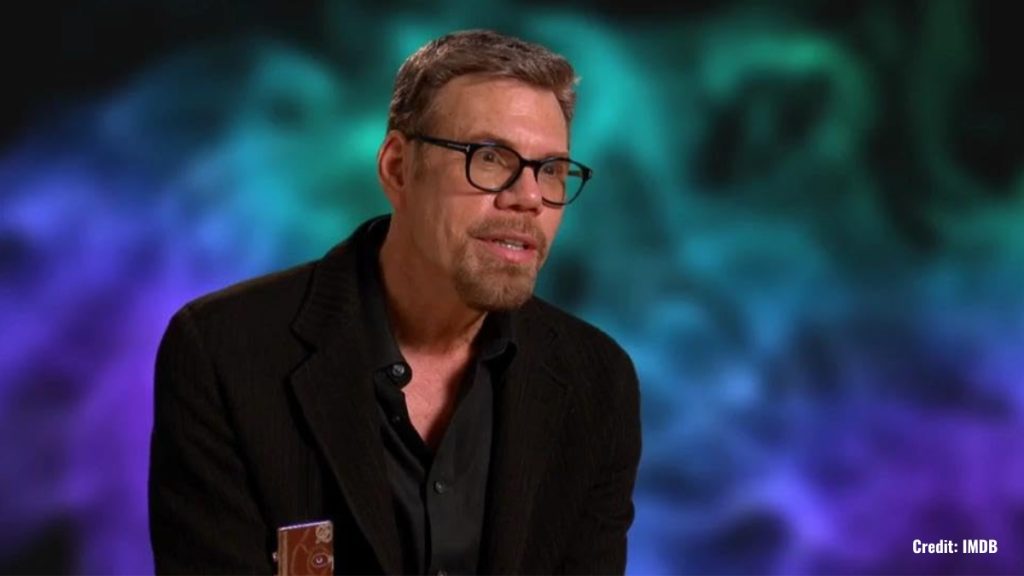
Katzenberg saw the patriotic appeal of the concept but ultimately passed on it, as he was focused on finding full-length feature projects for Disney’s animation department. Kirschner, undeterred, took his pitch elsewhere—to none other than Kathleen Kennedy, Steven Spielberg’s production partner. Kennedy was intrigued and invited Kirschner to Spielberg’s annual Fourth of July party to pitch the idea directly to the famed director.
Spielberg immediately saw the potential in Kirschner’s idea, but instead of a TV special, he envisioned a full-length animated feature film. This project would eventually become An American Tail, a tribute of sorts to Spielberg’s own grandfather, Philip Posner, who emigrated from Russia to the United States in the late 19th century. The film’s lead character, Fievel, was even named after Spielberg’s grandfather, whose Yiddish name was also Fievel.
Disney’s Loss Becomes Universal’s Gain
An American Tail went on to become a major success for Universal Pictures, which hadn’t been involved in an animated feature since the release of Pinocchio in Outer Space in 1965. Meanwhile, over at Disney, Eisner and Wells weren’t exactly thrilled that Katzenberg had let such a promising project slip through his fingers.
Not wanting to miss out on any future opportunities with Kirschner, Katzenberg quickly scheduled another meeting with him to discuss any other ideas he might have. And as fate would have it, Kirschner had just written a short story for Muppet Magazine called Halloween House, about a boy who is magically transformed into a cat by a trio of witches.
The Pitch That Sealed the Deal
Knowing Katzenberg could be a tough sell, Kirschner went all out to impress during his pitch. He requested access to the Disney lot 30 minutes early to set the stage for his presentation. When Katzenberg and the Disney development team walked into the conference room, they were greeted by a table covered in candy corn, a cauldron of dry ice fog, and a broom, mop, and vacuum cleaner suspended from the ceiling as if they were flying—evoking the magical world of Halloween House.
Katzenberg was reportedly unimpressed by the theatrical setup, muttering, “Oy, show-and-tell time” as he took his seat. But Kirschner knew exactly how to grab his attention. He started his pitch with the fact that Halloween was a billion-dollar business—a figure that made Katzenberg sit up and take notice. He listened attentively to Kirschner’s pitch, and by the time the meeting was over, Katzenberg was convinced. Halloween House would become Hocus Pocus, and Disney had its next big Halloween film.
A Bit of Hollywood Drama
Interestingly, Kirschner’s success with Hocus Pocus didn’t sit well with his old collaborators. About a year after the film’s release, Kirschner ran into Kathleen Kennedy at an Amblin holiday party, and she wasted no time in expressing her disappointment. According to Kirschner, Kennedy said, “You really hurt Steven.” When Kirschner asked how, she explained that Spielberg and Kennedy had given him his big break with An American Tail, but when he came up with the idea for his next film, he brought it to Disney rather than to them.
Hollywood can be a place where loyalty is valued—or, at least, perceived loyalty. At the same time, this was happening just as Katzenberg was leaving Disney and partnering with Spielberg and David Geffen to launch DreamWorks SKG, which only added to the tension. Loyalty, as Kirschner found out, can be an abstract concept in the entertainment industry.
A Halloween Favorite is Born
Despite its rocky start at the box office in 1993, Hocus Pocus has gone on to become a beloved part of Halloween pop culture. And, as Carlin’s book details, its success helped pave the way for more Disney Halloween-themed projects in the years that followed.
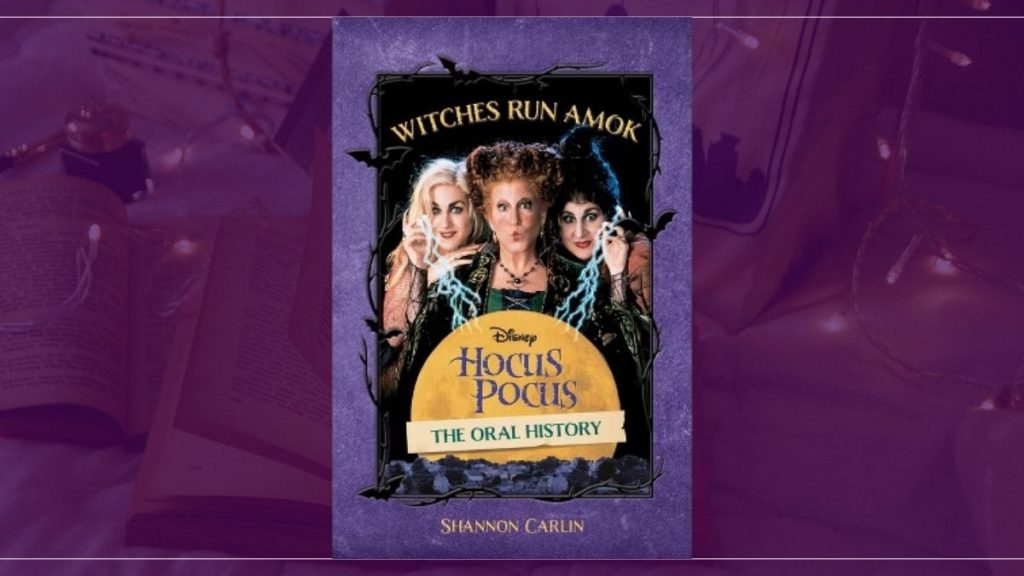
As for why Hocus Pocus was released in July of 1993 instead of during Halloween? That’s a story for another time, but it has something to do with another Halloween-themed project Disney was working on that year—Tim Burton’s The Nightmare Before Christmas—and Katzenberg finding himself in the awkward position of having to choose between keeping Bette Midler or Tim Burton happy.
For more behind-the-scenes stories about Hocus Pocus and other Disney films, be sure to check out Witches Run Amok by Shannon Carlin. It’s a fascinating read for any Disney fan!
And if you love hearing these kinds of behind-the-scenes stories about animation and film history, be sure to check out Fine Tooning with Drew Taylor, where Drew and I dive deep into all things movies, animation, and the creative decisions that shape the films we love. You can find us on your favorite podcast platforms or right here on JimHillMedia.com.
Film & Movies
How Disney’s “Bambi” led to the creation of Smokey Bear

When people talk about Disney’s “Bambi,” the scene that they typically cite as being the one from this 1942 film which then scarred them for life is – of course – the moment in this movie where Bambi’s mother gets shot by hunters.
Which is kind of ironic. Given that – if you watch this animated feature today – you’ll see that a lot of this ruined-my-childhood scene actually happens off-camera. I mean, you hear the rifle shot that takes down Bambi’s Mom. But you don’t actually see that Mama Deer get clipped.
Now for the scariest part of that movie that you actually see on-camera … Hands down, that has to be the forest fire sequence in “Bambi.” As the grown-up Bambi & his bride, Faline, desperately race through those woods, trying to find a path to safety as literally everything around them is ablaze … That sequence is literally nightmare fuel.
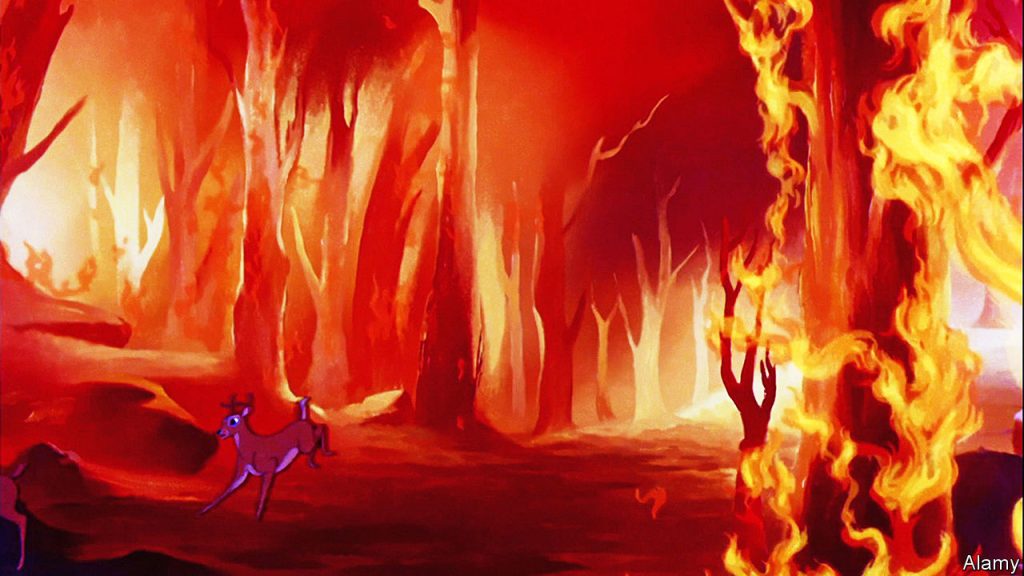
Mind you, the artists at Walt Disney Animation Studios had lots of inspiration for the forest fire sequence in “Bambi.” You see, in a typical year, the United States experiences – due to either natural phenomenon like lightning strikes or human carelessness – 100 forest fires. Whereas in 1940 (i.e., the year that Disney Studios began working in earnest of a movie version of Felix Salten’s best-selling movie), America found itself battling a record 360 forest fires.
Which greatly concerned the U.S. Forest Service. But not for the reason you might think.
Protecting the Forest for World War II
I mean, yes. Sure. Officials over in the Agricultural Department (That’s the arm of the U.S. government that manages the Forest Service) were obviously concerned about the impact that this record number of forest fires in 1940 had had on citizens. Not to mention all of the wildlife habitat that was now lost.
But to be honest, what really concerned government officials was those hundreds of thousands of acres of raw timber that had been consumed by these blazes. You see, by 1940, the world was on the cusp of the next world war. A conflict that the U.S. would inevitably be pulled into. And all that now-lost timber? It could have been used to fuel the U.S. war machine.
So with this in mind (and U.S. government officials now seeing an urgent need to preserve & protect this precious resource) … Which is why – in 1942 (just a few months after the Japanese bombed Pearl Harbor) – the U.S. Forest Service rolls out its first-ever forest fire prevention program.
Which – given that this was the early days of World War II – the slogan that the U.S. Forest Service initially chose for its forest fire prevention program is very in that era’s we’re-all-in-this-together / so-let’s-do-what-we-can-to-help-America’s war-effort esthetic – made a direct appeal to all those folks who were taking part in scrap metal drives: “Forest Defense is National Defense.”

And the poster that the U.S. Forest Service had created to support this campaign? … Well, it was well-meaning as well. It was done in the WPA style and showed men out in the forest, wielding shovels to ditch a ditch. They were trying to construct a fire break, which would then supposedly slow the forest fire that was directly behind them.
But the downside was … That “Forest Defense is National Defense” slogan – along with that poster which the U.S. Forest Service had created to support their new forest fire prevention program didn’t exactly capture America’s attention.
I mean, it was the War Years after all. A lot was going in the country at that time. But long story short: the U.S. Forest Service’s first attempt at launching a successful forest fire prevention program sank without a trace.
So what do you do in a situation like this? You regroup. You try something different.
Disney & Bambi to the Rescue
And within the U.S. government, the thinking now was “Well, what if we got a celebrity to serve as the spokesman for our new forest fire prevention program? Maybe that would then grab the public’s attention.”
The only problem was … Well, again, these are the War Years. And a lot of that era’s A-listers (people like Jimmy Stewart, Clark Gable, even Mel Brooks) had already enlisted. So there weren’t really a lot of big-name celebrities to choose from.
But then some enterprising official at the U.S. Forest Service came up with an interesting idea. He supposedly said “Hey, have you seen that new Disney movie? You know, the one with the deer? That movie has a forest fire in it. Maybe we should go talk with Walt Disney? Maybe he has some ideas about how we can better capture the public’s attention when it comes to our new forest fire prevention program?”
And it turns Walt did have an idea. Which was to use this government initiative as a way to cross-promote Disney Studio’s latest full-length animated feature, “Bambi.” Which been first released to theaters in August of 1942.
So Walt had artists at Disney Studio work up a poster that featured the grown-up versions of Bambi the Deer, Thumper the Rabbit & Flower the Skunk. As this trio stood in some tall grasses, they looked imploring out at whoever was standing in front of this poster. Above them was a piece of text that read “Please Mister, Don’t Be Careless.” And below these three cartoon characters was an additional line that read “Prevent Forest Fires. Greater Danger Than Ever!”
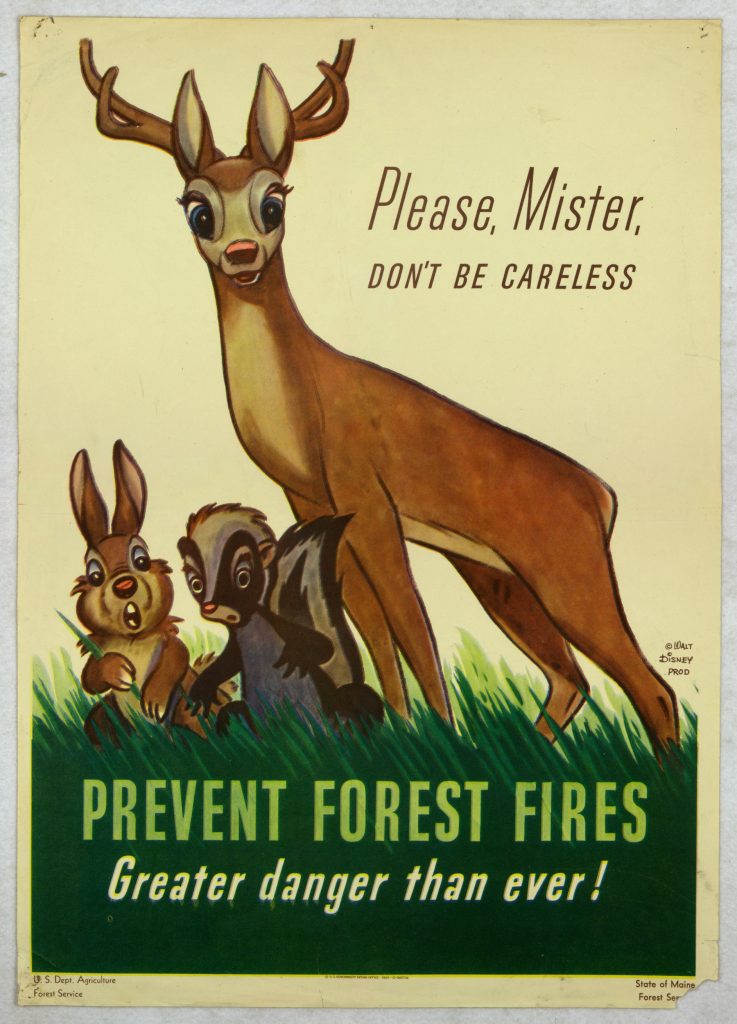
According to folks I’ve spoken with at Disney’s Corporate Archives, this “Bambi” -based promotional campaign for the U.S. Forest Service’s forest fire prevention campaign was a huge success. So much so that – as 1943 drew to a close – this division of the Department of Agriculture reportedly reached out to Walt to see if he’d be willing to let the U.S. Forest Service continue to use these cartoon characters to help raise the public’s awareness of fire safety.
Walt – for reasons known only to Mr. Disney – declined. Some have suggested that — because “Bambi” had actually lost money during its initial theatrical release in North America – that Walt was now looking to put that project behind him. And if there were posters plastered all over the place that then used the “Bambi” characters that then promoted the U.S.’s forest fire prevention efforts … Well, it would then be far harder for Mr. Disney to put this particular animated feature in the rear view mirror.
Introducing Smokey Bear
Long story short: Walt said “No” when it came to reusing the “Bambi” characters to promote the U.S. Forest Service’s forest fire prevention program. But given how successful the previous cartoon-based promotional campaign had been … Well, some enterprising employee at the Department of Agriculture reportedly said “Why don’t we come up with a cartoon character of our own?”
So – for the Summer of 1944 – the U.S. Forest Service (with the help of the Ad Council and the National Association of State Foresters) came up with a character to help promote the prevention of forest fires. And his name is Smokey Bear.
Now a lot of thought had gone into Smokey’s creation. Right from the get-go, it was decided that he would be an American black bear (NOT a brown bear or a grizzly). To make this character seem approachable, Smokey was outfitted with a ranger’s hat. He also wore a pair of blue jeans & carried a bucket.
As for his debut poster, Smokey was depicted as pouring water over a still-smoldering campfire. And below this cartoon character was printed Smokey’s initial catchphrase. Which was “Care will prevent 9 out of 10 forest fires!”
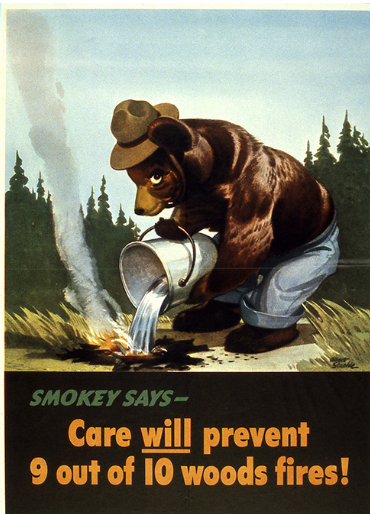
Which makes me think that this slogan was written by the very advertising executive who wrote “Four out of five dentists recommend sugarless gum for their patients who chew gum.”
Anyway … By the Summer of 1947, Smokey got a brand-new slogan. The one that he uses even today. Which is “Only YOU can prevent forest fires.”
The Real Smokey Bear
Now where this gets interesting is – in the Summer of 1950 – there was a terrible forest fire up in the Capitan Mountains of New Mexico. And over the course of this blaze, a bear cub climbed high up into a tree to try & escape those flames.
Firefighters were finally able to rescue that cub. But he was so badly injured in that fire that he was shipped off to the National Zoo in Washington, D.C. and nursed back to health. And since this bear really couldn’t be released back in the wild at this point, he was then put on exhibit.
And what does this bear’s keepers decide to call him? You guessed it: Smokey.
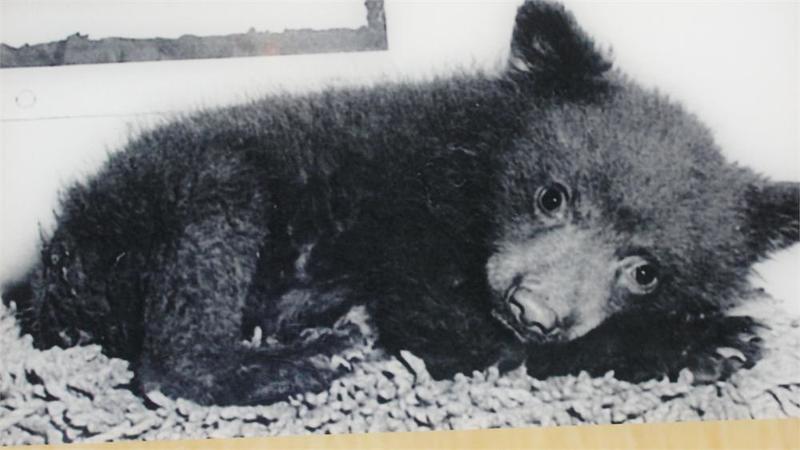
And due to all the news coverage that this orphaned bear got, he eventually became the living symbol of the U.S. Forest Service’s forest fire prevention program. Which then meant that this particular Smokey Bear got hit with a ton of fan mail. So much so that the National Zoo in Washington D.C. wound up with its own Zip Code.
“Smokey the Bear” Hit Song
And on the heels of a really-for-real Smokey Bear taking up residence in our nation’s capital, Steve Nelson & Jack Rollins decide to write a song that shined a spotlight on this fire-fightin’ bruin. Here’s the opening stanza:
With a ranger’s hat and shovel and a pair of dungarees,
You will find him in the forest always sniffin’ at the breeze,
People stop and pay attention when he tells them to beware
Because everybody knows that he’s the fire-preventin’ bear
Believe or not, even with lyrics like these, “Smokey the Bear” briefly topped the Country charts in the Summer of 1950. Thanks to a version of this song that was recorded by Gene Autry, the Singing Cowboy.
By the way, it was this song that started all of the confusion in regards to Smokey Bear’s now. You see, Nelson & Rollins – because they need the lyrics of their song to scan properly – opted to call this fire-fightin’-bruin Smokey THE Bear. Rather than Smokey Bear. Which has been this cartoon character’s official name since the U.S. Forest Service first introduced him back in 1944.
“The Ballad of Smokey the Bear”
Further complicating this issue was “The Ballad of Smokey the Bear,” which was a stop-motion animated special that debuted on NBC in late November of 1966. Produced by Rankin-Bass as a follow-up to their hugely popular “Rudolph the Red-Nosed Reindeer” (which premiered on the Peacock Network in December of 1964) … This hour-long TV show also put a “THE” in the middle of Smokey Bear’s name because the folks at Rankin-Bass thought his name sounded better that way.
And speaking of animation … Disney’s “Bambi” made a brief return to the promotional campaign for the U.S. Forest Service’s forest fire prevention program in the late 1980s. This was because the Company’s home entertainment division had decided to release this full-length animated feature on VHS.
What’s kind of interesting, though, is the language used on the “Bambi” poster is a wee different than the language that’s used on Smokey’s poster. It reads “Protect Our Forest Friends. Only You Can Prevent Wildfires.” NOT “Forest Fires.”
Anyway, that’s how Disney’s “Bambi” led to the creation of Smokey Bear. Thanks for bearin’ with me as I clawed my way through this grizzly tale.
Film & Movies
“Indiana Jones and the Search for Indiana Jones”
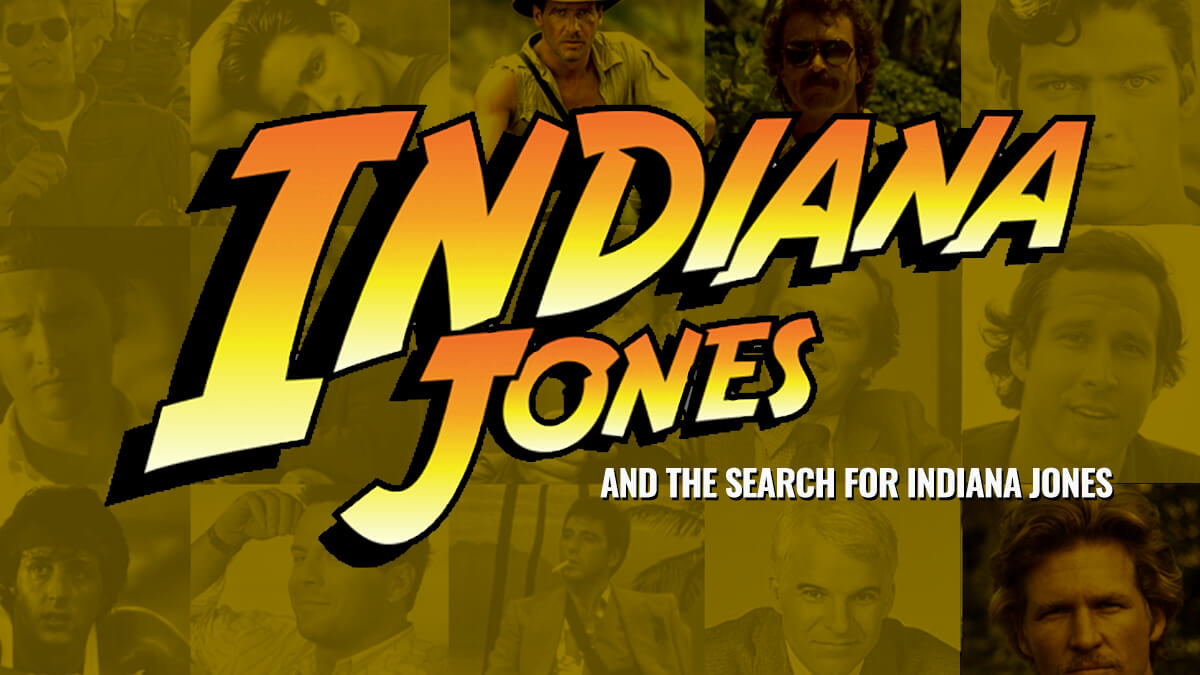
News came late last week that NBC was cancelling the “Magnum PI” remake. This series (which obviously took its inspiration from the Tom Selleck show that originally debuted on CBS back in December of 1980 and then went on run on that network for 8 seasons. With its final episode airing on May 8, 1988).
Anyway … Over 30 years later, CBS decided to remake “Magnum.” This version of the action drama debuted on September 24, 2018 and ran for four seasons before then being cancelled. NBC picked up the “Magnum” remake where it ran for one more season before word came down on June 23rd that this action drama was being cancelled yet again.
FYI: The second half of Season 5 of “Magnum” (10 episodes) has yet to air on NBC. It will be interesting to see when that final set of shows / the series finale gets scheduled.
This all comes to mind this week – out ahead of the theatrical release of “Indiana Jones and the Dial of Destiny” because … Well, if CBS execs had been a bit more flexible back in 1980, the star of the original version of “Magnum PI” (Tom Selleck) would have played the lead in “Raiders of the Lost Ark.” Which was released to theaters back on June 12, 1981.
That’s the part of the Indiana Jones story that the folks at Lucasfilm often opt to skim over.
That Harrison Ford wasn’t George Lucas’ first choice to play Doctor Jones.
Auditions for Indiana Jones – Harrison’s Not on the List
Mind you, Steven Spielberg – right from the get-go – had pushed for Ford to play this part. The way I hear it, Lucas showed Spielberg a work-in-progress cut of “The Empire Strikes Back.” And Steven was so taken with Harrison’s performance as Han Solo in that Irwin Kershner film that he immediately began pushing for Ford to be cast as Doctor Jones.
Whereas Mr. Lucas … I mean, it wasn’t that George had anything against Harrison. What with Ford’s performances first in “American Grafitti” and then in “A New Hope,” these two already had a comfortable working relationship.
But that said, Lucas was genuinely leery of … Well, the sort of creative collaboration that Martin Scorcese and Robert DeNiro. Where one actor & one director repeatedly worked together. To George’s way of thinking, that was a risky path to follow. Hitching your wagon to a single star.
Which is why – when auditions got underway for “Raiders of the Lost Ark” in 1979 — Mike Fenton basically brought in every big performer of that era to read for Dr. Jones except Harrison Ford. We’re talking:
- Steve Martin
- Chevy Chase
- Bill Murray
- Jack Nicholson
- Peter Coyote
- Nick Nolte
- Sam Elliot
- Tim Matheson
- and Harry Hamlin
Casting a Comedian for Indiana Jones
Please note that there are a lot of comedians on this list. That’s because – while “Raiders of the Lost Ark” was in development — Spielberg was directed his epic WWII comedy, “1941.” And for a while there, Steve & George were genuinely uncertain about whether the movie that they were about to make would be a sincere valentine to the movie serials of the 1930s & the 1940s or more of a spoof.
It’s worth noting here that three of the more ridiculous set pieces found in “Temple of Doom” …
- the shoot-out at Club Obi Wan in Shanghai
- Indy, Willie & Short Round surviving that plane crash by throwing an inflatable life raft out of the cargo hatch
- and that film’s mine cart chase (which was not only inspired by Disney theme park favorites the Matterhorn Bobsleds & Big Thunder Mountain Railroad but some of the sound effects that you hear in this portion of “Temple of Doom” were actually recorded after hours at Disneyland inside of these very same attractions)
… all originally supposed to be in “Raiders of the Lost Ark.” I’ve actually got a copy of the very first version of the screenplay that Lawrence Kasdan wrote for the first “Indy” movie where all three of these big action set pieces were supposed to be part of the story that “Raiders” told. And I have to tell you that this early iteration of the “Raiders” screenplay really does read more like a spoof of serials than a sincere, loving salute to this specific style of cinema.
Casting Indiana Jones – Jeff or Tom
Anyway … Back now to the casting of the male lead for “Raiders” … After seeing virtually every actor out in LA while looking for just the right performer to portray Indiana Jones, it all came down to two guys:
- Jeff Bridges
- and Tom Selleck
Jeff Bridges as Indiana Jones
Mike Fenton was heavily pushing for Jeff Bridges. Having already appeared with Clint Eastwood in 1974’s “Thunderbolt & Lightfoot” (Not to mention that “King Kong” remake from 1976), Bridges was a known quantity. But what Fenton liked especially liked about Bridges when it came to “Raiders” was … Well, at that time, Jeff was just coming off “Heaven’s Gate.”
Mind you, nowadays, because we’ve all now had the luxury of seeing the director’s cut of this Michael Cimino movie, we recognize “Heaven’s Gate” for the cinematic masterpiece that it is. But 40+ years ago, that honestly wasn’t the case. All audiences had to judge this movie by was the severely truncated version that United Artists sent out into theaters. Which – because “Heaven’s Gate” had cost $44 million to make and only sold $3.5 million of tickets – then became the textbook example of Hollywood excess.
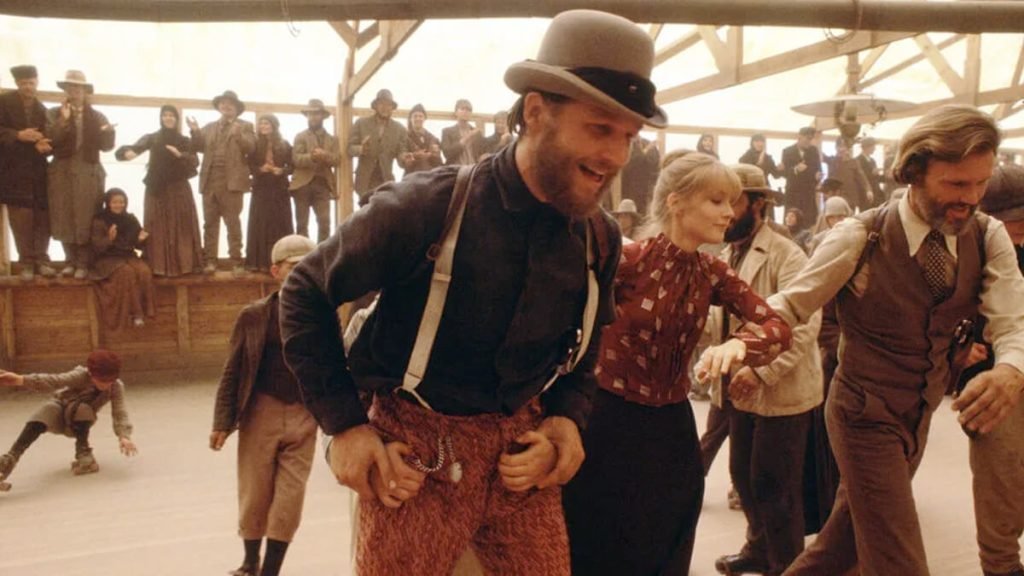
Long story short: Given that being associated with “Heaven’s Gate” had somewhat dinged Bridges’ reputation for being a marketable star (i.e., a performer that people would pay good money to see up on the big screen), Jeff was now looking to appear in something highly commercial. And the idea of playing the lead in a film directed by Steven Spielberg (the “Jaws” & “Close Encounter” guy) and produced by George Lucas (Mr. “Star Wars”) was very, very appealing at that time. Bridges was even willing to sign a contract with Spielberg & Lucas that would have then roped him into not only playing Indiana Jones in “Raider of the Lost Ark” but also to appear as this very same character in two yet-to-be-written sequels.
Better yet, because “Heaven’s Gate” had temporarily dimmed Bridges’ star status, Jeff was also willing to sign on to do the first “Indy” film for well below his usual quote. With the understanding that – should “Raiders of the Lost Ark” succeed at the box office – Bridges would then be paid far more to appear in this film’s two sequels.
That seemed like a very solid plan for “Raiders.” Landing a known movie star to play the lead in this action-adventure at a bargain price.
Ah, but standing in Mike Fenton’s way was Marcia Lucas.
Tom Selleck as Indiana Jones
Marcia Lucas, who had seen Tom Selleck’s audition for “Raiders” (And you can see it as well. Just go to Google and type in “Tom Selleck” and “Indiana Jones.” And if you dig around for a bit, you’ll then see a feature that Lucas & Spielberg shot for “Entertainment Tonight” back in 2008 [This story was done in support of the theatrical release of “Indiana Jones and the Kingdom of the Crystal Skull”]. And as part of this piece, George and Steve share Tom’s original audition for “Raiders.” And what’s genuinely fascinating about this footage is that Selleck’s scene partner is Sean Young. Who – at that time, anyway – was up for the role of Marion Ravenwood) and kept telling her husband, “You should cast this guy. He’s going to be a big star someday.”
And given that George was smart enough to regularly heed Marcia Lucas’ advice (She had made invaluable suggestions when it came to the editing of “American Graffiti” and the original “Star Wars.” Not to downplay George Lucas’ cinematic legacy, but Marcia Lucas was a world-class storyteller in and of her own right), Lucas then reached out to Spielberg and persuaded him that they should cast relative unknown Tom Selleck as Doctor Jones over the already well-known Jeff Bridges.
Now don’t feel too bad for Jeff Bridges. When he lost out on playing the lead in “Raiders of the Lost Ark,” Jeff then accepted a role in the very next, high profile, sure-to-be-commercial project that came along. Which turned out to be Disney’s very first “TRON” movie. Which was eventually released to theaters on July 9, 1982.
Back to Tom Selleck now … You have to remember that – back then – Selleck was the handsome guy who’d already shot pilots for six different shows that then hadn’t gone to series. Which was why Tom was stuck being the guest star on shows like “The Fall Guy” and “Taxi.” Whereas once word got out around town that Selleck was supposed to play the lead in a project that Spielberg was directed & Lucas was producing … Well, this is when CBS decided that they’d now take the most recent pilot that Tom had shot and then go to series with this show.
That program was – of course – the original “Magnum PI.” And it’s at this point where our story started to get complicated.
“Magnum PI” – Two Out of Three Say “Yes”
Okay. During the first season of a TV show, it’s traditionally the network – rather than the production company (which – in this case – was Glen A. Larson Productions. The company behind the original versions of “Battlestar Galactica” & “Knight Rider”) or the studio where this series is actually being shot (which – in this case – was Universal Television) that has all the power. And in this particular case, the network execs who were pulling all the strings behind-the-scenes worked for CBS.
And when it came to the first season of “Magnum PI,” CBS had a deal with Glen A. Larson Productions and Universal Television which stated that the talent which had been contracted to appear in this new action drama would then be available for the production of at least 13 episodes with an option to shoot an additional 9 episodes (This is known in the industry as the back nine. As in: the last nine holes of a golf course).
Anyway, if you take those initial 13 episodes and then tack on the back nine, you then get 22 episodes total. Which – back in the late 1970s / early 1980s, anyway – was what a full season of a network television show typically consisted of.
Anyway … The contract that Selleck had signed with Glen A. Larson Productions, Universal Television & CBS stated that he had to be available when production of Season One of “Magnum PI” began in March of 1980. More to the point, Tom also had to be available should CBS exercise its option to air 22 episodes of this new series on that television network over the course of “Magnum PI” ‘s first season.
Which then made things complicated for George Lucas & Steven Spielberg because … Well, in order for “Raiders of the Lost Ark” to make its June 12, 1981 release date, that then meant that production of the first “Indy” movie would have to get underway no later than June 23, 1980.
But here’s the thing: Production of Season One of “Magnum PI” was scheduled to run through the first week of July of that same year (1980). So in order for Tom Selleck to play Indiana Jones in “Raiders,” he was going to need to be wrapped on production of “Magnum PI” by June 22, 1980 at the absolute latest.
So Spielberg & Lucas went to Glen A. Larsons Productions and asked if Selleck could please be sprung from his “Magnum PI” contractual obligations by June 22nd. And they said “Yes.” Then Steven & George went to Universal Television and asked executives there for their help in clearing Tom’s schedule so that he’d then be available to start work on “Raiders.” And they say “Yes” as well.
Spielberg & Lucas now go to CBS. But instead of the quick “Yeses” that they got from officials at Glen A. Larson Productions and Universal Television, it takes those suits at the Tiffany Network weeks before they then decided to say “No, they couldn’t release Tom Selleck early to go work on ‘Raiders’ “ because …
I’ve never really been able to get a straight answer here as to why CBS execs dug in their heels here. Why they flat-out refused to release Selleck early from his “Magnum PI” contractual obligation and allow him to go shoot “Raiders.”
Payback from “The Star Wars Holiday Special” Trash Talk
That said, it is worth noting that “The Star Wars Holiday Special” aired on CBS back in November of 1978. And given that – in the years that followed — Lucas wasn’t exactly shy when it came to saying how much he hated that two hour-long presentation (Or – for that matter – how George really regretted caving into the requests of CBS execs. Who had insisted that television stars long associated with the Tiffany Network – people like Art Carney, Harvey Korman & Bea Arthur – be given prominent guest starring roles in “The Star Wars Holiday Special”). And I’ve heard whispers over the years that CBS executives preventing Tom Selleck from appearing in “Raiders” could be interpreted as the Tiffany Network getting some payback for what George had said publicly about the “Star Wars Holiday Special.”
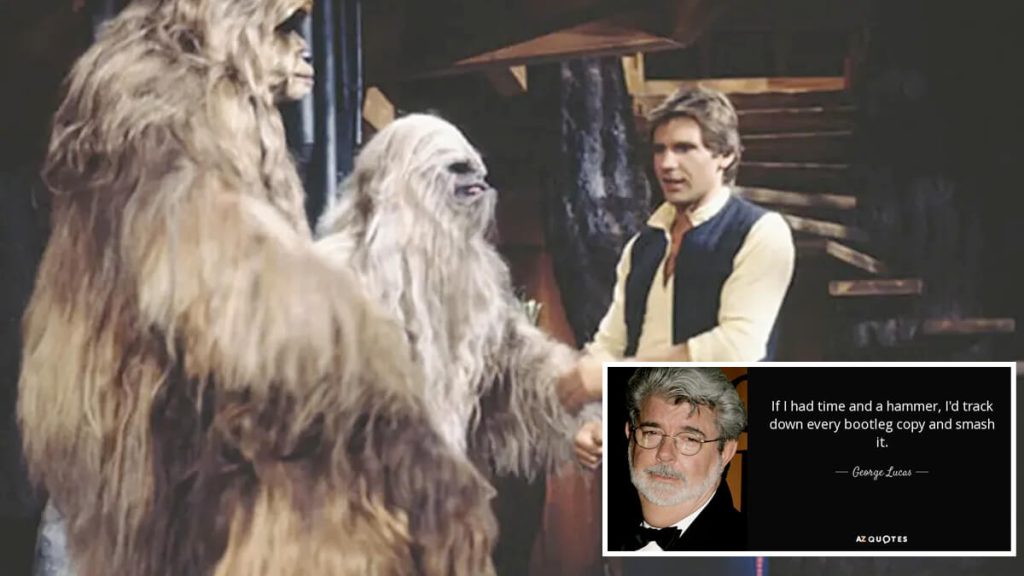
Harrison Ford Comes to Rescue “Indiana Jones”
Anyway … It’s now literally just weeks before production of “Raiders of the Lost Ark” is supposed to begin and Spielberg & Lucas have just learned that that they’ve lost their film’s star. CBS is flat-out refusing to release Tom Selleck early from his “Magnum PI” contractual obligation. So Steven & George now have to find someone else to play Indy … and fast.
The real irony here is … The American Federation of Television and Radio Artists would go on strike in the Summer of 1980. Which then shut prematurely shut down production of the first season of “Magnum PI.” (As a direct result, the first full season of this action drama to air on CBS only had 18 episodes, rather than the usual 22). And because this job action lasted ‘til October 23rd of that same year … Well, this meant that Tom Selleck would have actually been free to start shooting “Raiders of the Lost Ark” on June 23, 1980 because production of Season One of “Magnum PI” was already shut down by then due to that AFTRA strike.
But no one knew – in May of 1980, anyway – that this job action was going to happen in just a few weeks. All that Steven Spielberg & George Lucas knew was that they now needed a new lead actor for “Raiders.” And circling back on Jeff Bridges was no longer an option. As I mentioned earlier, Jeff had agreed to do “TRON” for Disney. And – in the interim – Bridges gone off to shoot “Cutter’s Way” for MGM / UA.
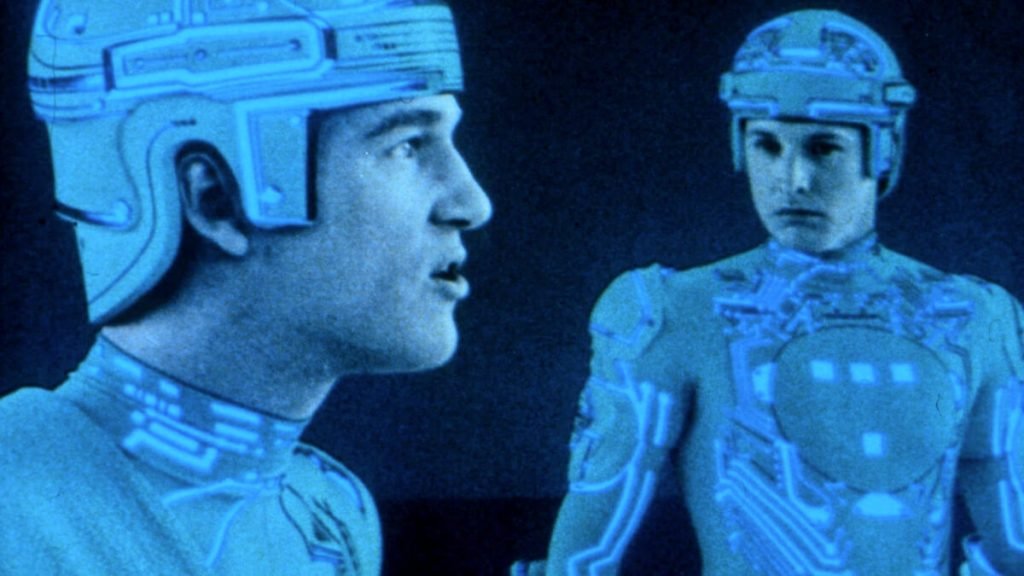
So this is where Harrison Ford enters the equation. As he recalls:
In May of 1980, I get a call from George Lucas. Who says ‘I’m messaging a script over to you this morning. As soon as it gets there, I need you to immediately read this script. Then – as soon as you’re done – I need you to call.
So the script arrives and it’s for ‘Raiders.’ I read it and it’s good. So I call George back and say ‘It’s good.’ And he then says ‘Would you be interested in playing Indy?’ I say that it looks like it would be a fun part to play.
George then says ‘ That’s great to hear. Because we start shooting in four weeks. Now I need you to meet with Steven Spielberg today and convince him that you’re the right guy to play Indy.’
Of course, given that Spielberg had been pushing for Ford to pay Indy ever since he had first seen that work-in-progress version of “The Empire Strikes Back” … Well, Harrison’s meeting with Steven was very, very short. And just a few weeks later, Spielberg, Lucas & Ford were all at the Port de la Pallice in La Rochelle. Where – on the very first day of shooting on “Raiders” (which – again – was June 23, 1980)– the scene that was shot was the one where that Nazi sub (the one that Indy had lashed himself to its periscope by using his bullwhip as a rope) was arriving at its secret base.
And all of this happened because Harrison immediately agreed to do “Raiders of the Lost Ark” when the part of Indy was first offered to him in mid-May of 1980.
Before “Star Wars” was “Star Wars”
So why such a quick yes? Well, you have to remember that “Empire Strikes Back” wouldn’t be released to theaters ‘til May 21, 1980. And no one knew at that time whether this sequel to the original “Star Wars” would do as well at the box office as “A New Hope” had back in 1977 (FYI: “Empire” would eventually sell over $500 million worth of tickets worldwide. Which is roughly two thirds of what the original “Star Wars” earned three years earlier).
More to the point, the four films that Harrison had shot right after “A New Hope” / prior to “Empire Strikes Back” (i.e., “Heroes” AND “Force 10 from Navarone” AND “Hanover Street” AND “The Frisco Kid”) had all under-performed at the box office. So to Ford’s way of thinking, taking on a role that Tom Selleck was no longer available to play – one that had the potential of spawning two sequels – seemed like a very smart thing to do. Especially after three years of cinematic stumbles.
By the way, whenever this topic ever comes up, Harrison Ford is very gracious. He always makes a point of saying that he’s grateful to have gotten this career opportunity. More to the point, that he still feels kind of bad that Tom Selleck never got the chance to play this part.
Tom Selleck After “Indiana Jones”
That said, we shouldn’t feel too bad for Tom Selleck. After all, the original “Magnum PI” proved to be a long running hit for CBS. And in an effort to smooth over any residual bad feelings that may have resulted from Tom being forced to give up “Raiders” back in May of 1980, Selleck was eventually allowed to create his own production company (i.e., T.W.S. Productions, Inc. As in Thomas William Selleck Productions). Which – after the fact – was then cut in on some of those “Magnum PI” -related revenue streams.
More to the point, while “Magnum PI” was on hiatus following its second year in production, Selleck flew off to Yugoslavia. Where he then shot his own Indiana Jones-esque film for theatrical release. Which was called “High Road to China” in the States, but – overseas – was promoted as “Raiders of the End of the World.”
FYI: Warner Bros. released “High Road to China” stateside 40 years ago this year. On March 18, 1983, to be exact. It didn’t do all that great at the box office. $28 million in ticket sales versus $15 million in production costs.
And over the years, there’s even been some talk of finding a way to maybe set things right here. By that I mean: Finally finding a way to officially fold Tom Selleck into the world of Indiana Jones.
Could Tom Selleck Work with Indiana Jones?
The way I hear it, between the time when “Indiana Jones and the Last Crusade” was theatrically released in May of 1989 and when “Indiana Jones and the Kingdom of the Crystal Skull” debuted in May of 2008, there were a number of ideas for Indiana Jones sequels tossed around. And from what I’ve been told, there was at least one treatment for a fourth Indiana Jones film written that proposed pairing up Harrison Ford & Tom Selleck. With the idea here being that Selleck was supposed to have played Ford’s brother.
Obviously that film was never made. And – no – I don’t know what state Indiana Jones’ brother was supposed to be named after.
This article is based on research for Looking at Lucasfilm “Episode 80”, published on June 29, 2023. Looking at Lucasfilm is part of the Jim Hill Media Podcast Network.
-

 History10 months ago
History10 months agoThe Evolution and History of Mickey’s ToonTown
-

 History11 months ago
History11 months agoUnpacking the History of the Pixar Place Hotel
-

 History11 months ago
History11 months agoFrom Birthday Wishes to Toontown Dreams: How Toontown Came to Be
-

 Film & Movies8 months ago
Film & Movies8 months agoHow Disney’s “Bambi” led to the creation of Smokey Bear
-

 News & Press Releases10 months ago
News & Press Releases10 months agoNew Updates and Exclusive Content from Jim Hill Media: Disney, Universal, and More
-

 Merchandise8 months ago
Merchandise8 months agoIntroducing “I Want That Too” – The Ultimate Disney Merchandise Podcast
-

 Theme Parks & Themed Entertainment3 months ago
Theme Parks & Themed Entertainment3 months agoDisney’s Forgotten Halloween Event: The Original Little Monsters on Main Street
-

 Film & Movies3 months ago
Film & Movies3 months agoHow “An American Tail” Led to Disney’s “Hocus Pocus”








